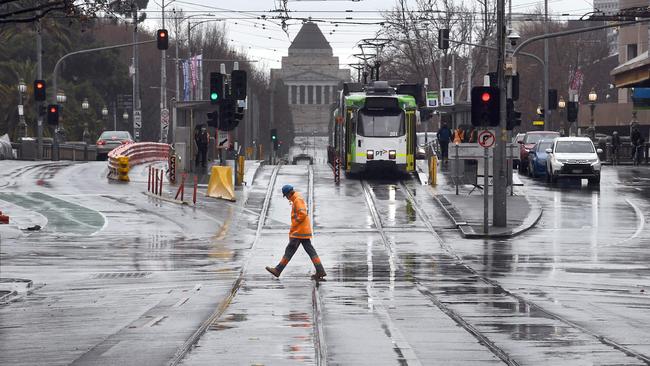Coronavirus: ‘Stimulus needed if business to invest’
New estimates suggest business investment could plunge by as much as 13 per cent, or $15bn, in this financial year.

Business groups are demanding further economic stimulus and new incentives to prevent an investment collapse as new estimates suggest corporate spending will plunge up to 13 per cent, or by $15bn, this financial year.
In a rallying call ahead of the October 6 budget, Business Council of Australia chief executive Jennifer Westacott said the country “must urgently act to lift investment across the economy”.
She also called for a 20 per cent investment allowance for businesses of all sizes “to give them the confidence and certainty to start projects, invest and create the jobs we need across the economy”.
“Business investment as a share of the economy is now on track to reach levels not seen since the early 1990s recession, a time many will remember as one of hopelessness and despair for hundreds of thousands of Australians,” Ms Westacott said.
Firms cut spending on machinery, equipment and buildings by $1.6bn, or 5.9 per cent, in the three months to June versus the previous quarter, according to the Australian Bureau of Statistics.
And the collapse in business investment is forecast to intensify this financial year.
An ABS report on business investment intentions pointed to a drop in spending of 13 per cent in 2020-21 versus 2019-20. That would be equivalent to $15bn.
Outside mining investment, which is expected to remain steady, business spending would plunge by nearly a fifth this financial year, ANZ said.
“Together, a more gradual trajectory for the domestic and global economic recovery, the risks of new outbreaks and restrictions, and general uncertainty appear to be discouraging large investments,” ANZ senior economist Catherine Birch said.
The sharp drop in actual and intended business investment highlights the challenge facing the government as it strives to spark recovery.
Australian Industry Group chief executive Innes Willox said the projected fall in business spending would “not be simple to arrest”, and that it depended on an economy-wide recovery in demand.
“Further fiscal stimulus measures will be required to achieve these outcomes,” he said. “Short of a cut in the company tax rate, it is difficult to see how business investment plans will pick up.”
The mining sector appeared to have emerged from the difficult few months to June in better shape than other industries, thanks to the sharp recovery in China’s economy and a lift in demand for key commodities, especially iron ore.
Mining capex eased 1.2 per cent through the quarter, even as iron ore investment lifted to its highest level since 2014.
But manufacturing capex slumped by 4.5 per cent over the three months, and “other” industries by 8.4 per cent, the ABS said.
By type of investment, machinery and equipment capex slumped 7.6 per cent, and spending on new buildings and structures by 4.4 per cent.
In annual terms, mining investment rose by 3 per cent in 2019-20 — the first increase since 2012-13 as West Australian iron ore miners poured billions into new projects.
Outside the resources sector, the picture was grim: non-mining capex finished 2019-20 down 10 per cent.




To join the conversation, please log in. Don't have an account? Register
Join the conversation, you are commenting as Logout